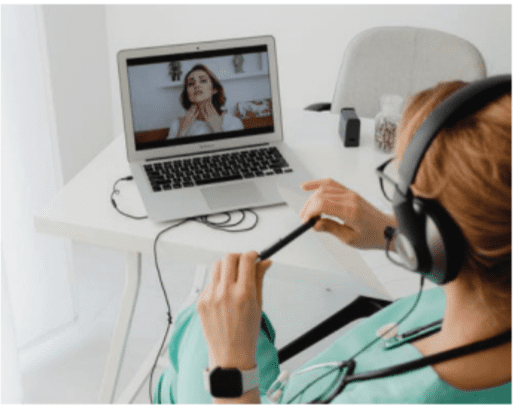
The onset of the pandemic came along with a lot of hindrances and challenges to public health. However, accompanied by this were also many ventures that emerged in the healthcare sector. One such very noticeable upsurge was in the number of apps and sites providing telehealth services. Telehealth or the use of two-way communications technology has affected the healthcare sector ominously. Apps like MayoClinic, Practo, Lybrate, Tata Health, or Doctor 24x7 have seen many users consulting with doctors virtually for various ailments. People have used such online portals to remedy Covid symptoms and aid respiratory ailments, diagnostic imaging systems and services, and even psychological counselling. According to a report by Practo, approximately five crores’ Indians sought medical consultation virtually with around two online doctor visits per month. A 600 % growth has been registered with such sites not just in India but even abroad. As stated by McKinsey & Company, telehealth use has increased 38 times from the pre-Covid-19 baseline. Though this trend of web diagnosing has risen post-pandemic, it has not emerged recently. The world’s first VSAT-enabled village hospital was commissioned in Andhra Pradesh on 24th March 2000. In 2015 the Social Endeavour for Health and Telemedicine (SEHAT) was also launched to connect healthcare structures. So, telemedicine has not been bequeathed to India by Covid-19. This rise, nonetheless, has been due to the pandemic. Post pandemic, there was a very hard-wearing hesitancy of people to visit hospitals and doctors. The hesitancy gave apps and sites venturing into telemedicine an opportunity to be the bridge between doctors and tentative patients. There was an escalation of doctors and medicine practisers willing to provide virtual consultancy and consumers willing to be web diagnosed. Anil Vinayak, the GCOO of Fortis Healthcare, has famously quoted, “The use of telemedicine technology allows healthcare to become more accessible, efficient, and convenient for the patient.” However, since its inception in India, the growth of telemedicine has also been slow. A significant factor for this slow growth has been the apprehension about the legal notions of telemedicine. According to the legislator guidelines, a Registered Medical Practitioner can use any telemedicine tool suitable to connect to the patient, such as Practo or even WhatsApp, Facebook, and such social platforms. Then again, there is the concern of the accuracy of such a diagnosis. According to the legal guidelines, all medical practitioners must complete a mandatory online course within three years of notification to provide a diagnosis via telemedicine. Despite this, there will always be apprehension about the precision of such diagnosis since it is a technology we are letting take control of our health. This growth of telemedicine needs to be therefore addressed with prudence. There have to be constant checks and monitoring over the services provided via such technology. The consumers of such apps and sites need to exercise discretion and caution while being web-diagnosed.
10 Jan 2022
Pranjal Nangare